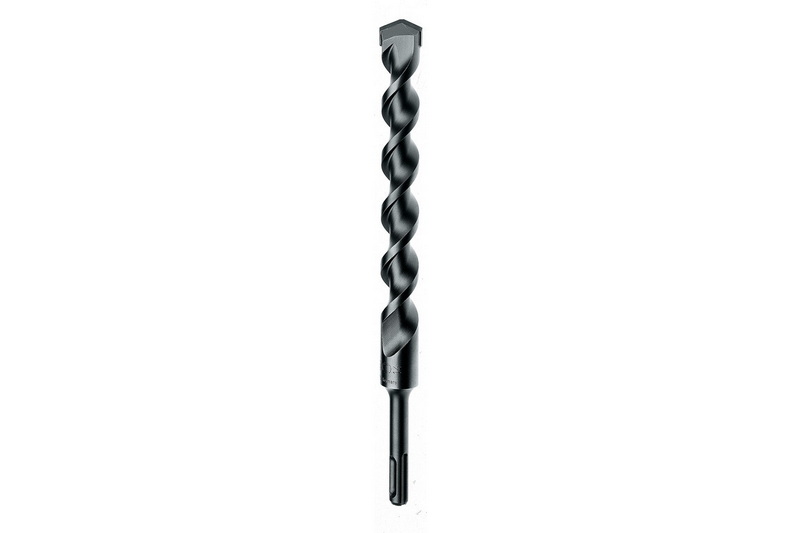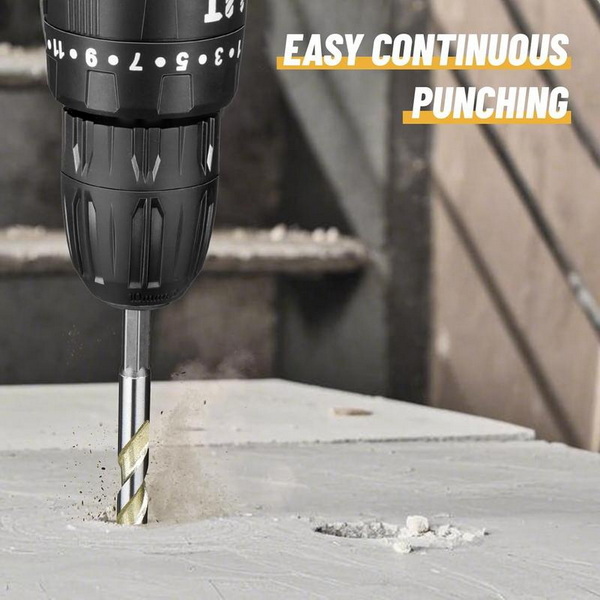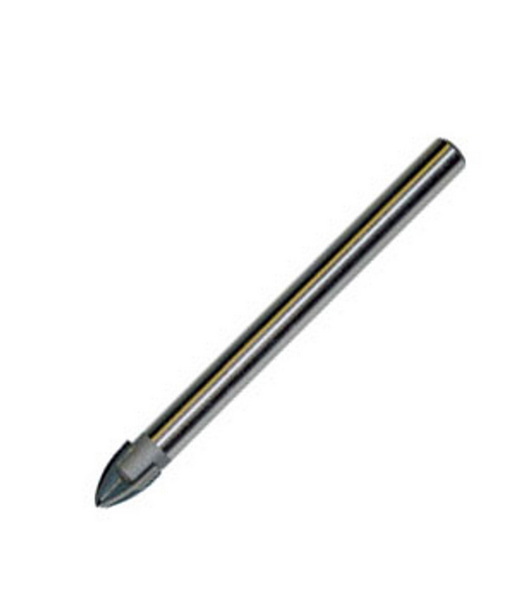Content Menu
● Introduction
● Understanding Carbide Drill Bits
>> What Are Carbide Drill Bits?
>> Why Choose Carbide Over Other Materials?
● Key Advantages of 3/8 Carbide Drill Bits for Industrial Use
● Industrial Applications of 3/8 Carbide Drill Bits
● Types of 3/8 Carbide Drill Bits
>> 1. Solid Carbide Drill Bits
>> 2. Carbide-Tipped Drill Bits
>> 3. SDS Carbide Drill Bits
>> 4. Coated Carbide Drill Bits
● How to Choose the Best Production Tool Supply 3/8 Carbide Drill Bit
>> 1. Material Compatibility
>> 2. Drill Bit Geometry
>> 3. Coating and Finish
>> 4. Shank Type
>> 5. Precision Requirements
● Best Practices for Using 3/8 Carbide Drill Bits
● Common Challenges and Troubleshooting
● Comparing Top Production Tool Supply 3/8 Carbide Drill Bits
● Selecting the Right Supplier
● Advanced Tips for Maximizing Drill Bit Performance
>> Optimize Your Drilling Setup
>> Cooling and Lubrication
>> Maintenance and Storage
● Innovations in Carbide Drill Bit Technology
>> Micrograin Carbide
>> Advanced Coatings
>> Flute and Point Design
● Environmental Considerations in Drill Bit Production
>> Sustainable Manufacturing
>> Workplace Safety
● Real-World Case Studies
>> Automotive Industry: High-Volume Steel Drilling
>> Construction: Masonry and Concrete Drilling
>> Aerospace: Precision Composite Drilling
● Future Trends in Carbide Drill Bit Development
>> Smart Tool Integration
>> Customization and On-Demand Manufacturing
● Conclusion
● FAQ
>> 1. What materials can a 3/8 carbide drill bit cut through?
>> 2. How do I prevent my carbide drill bit from breaking during use?
>> 3. Are coated carbide drill bits better than uncoated ones?
>> 4. What is the difference between solid carbide and carbide-tipped drill bits?
>> 5. How do I choose the right 3/8 carbide drill bit for my application?
Introduction
Selecting the best 3/8 carbide drill bit for industrial applications is crucial for maximizing efficiency, precision, and tool longevity. Whether you are involved in manufacturing, construction, mining, or oil drilling, the right drill bit can dramatically impact productivity and cost-effectiveness. This comprehensive guide explores everything you need to know about production tool supply 3/8 carbide drill bits, including their advantages, types, applications, and how to choose the best one for your needs.

Understanding Carbide Drill Bits
What Are Carbide Drill Bits?
Carbide drill bits are cutting tools made from tungsten carbide, a compound renowned for its exceptional hardness and heat resistance. These bits are engineered to withstand the toughest materials and the most demanding industrial environments, making them a staple in production tool supply for professionals who need reliability and performance under pressure.
Why Choose Carbide Over Other Materials?
| Drill Bit Type | Hardness | Heat Resistance | Suitable For | Cost |
| High-Speed Steel | Medium | Medium | Wood, plastics, mild steel | Low |
| Cobalt | High | High | Stainless steel, cast iron | Medium |
| Carbide | Very High | Very High | Hard metals, masonry, stone | High |
Carbide drill bits outperform high-speed steel (HSS) and cobalt bits in terms of hardness, heat resistance, and longevity, especially when drilling into abrasive or hard materials.
Key Advantages of 3/8 Carbide Drill Bits for Industrial Use
- Exceptional Hardness: Maintains sharpness and cutting edge even under extreme conditions.
- Superior Heat Resistance: Performs well at high speeds and temperatures, reducing bit wear.
- Long Service Life: Fewer replacements and less downtime, making them cost-effective in the long run.
- Versatility: Suitable for a broad range of materials, including metals, masonry, ceramics, composites, and plastics.
- Precision: Delivers clean, accurate holes, essential for industrial applications where tolerances are tight.
Industrial Applications of 3/8 Carbide Drill Bits
- Manufacturing: Precise hole-making in steel, aluminum, and other alloys.
- Construction: Drilling into concrete, stone, and masonry for anchors and fasteners.
- Mining and Oil Drilling: Penetrating hard rock and abrasive substrates.
- Automotive: Creating holes in cast iron and hardened steel components.
- Aerospace: High-precision drilling in tough alloys and composites.
Types of 3/8 Carbide Drill Bits
1. Solid Carbide Drill Bits
- Made entirely from carbide for maximum durability.
- Ideal for high-precision, high-speed drilling in abrasive materials.
- Commonly used in CNC machinery and automated production lines.
2. Carbide-Tipped Drill Bits
- Steel body with a carbide tip.
- More affordable than solid carbide, but slightly less durable.
- Suitable for heavy-duty hand drilling and rotary hammer applications.
3. SDS Carbide Drill Bits
- Designed for use with rotary hammers with SDS chucks.
- Optimized fluting for dust removal and reduced heat build-up.
- Perfect for concrete and masonry drilling in construction.
4. Coated Carbide Drill Bits
- Coatings such as Titanium Nitride (TiN) or Diamond-Like Carbon (DLC) enhance durability and heat resistance.
- Recommended for high-speed, high-temperature drilling in tough metals.
How to Choose the Best Production Tool Supply 3/8 Carbide Drill Bit
1. Material Compatibility
- Match the drill bit to the material being drilled (e.g., solid carbide for hard metals, SDS for masonry).
- Consider the abrasiveness and hardness of the workpiece.
2. Drill Bit Geometry
- Flute design affects chip evacuation and heat dissipation.
- Cutting angle (e.g., 118° for general use, 135° for harder materials) impacts penetration efficiency.
3. Coating and Finish
- Coated bits last longer in high-heat environments.
- Uncoated bits are suitable for less abrasive materials but may wear faster.
4. Shank Type
- Round shank for general-purpose drilling.
- SDS shank for rotary hammer drills in construction.
5. Precision Requirements
- For tight tolerances, opt for solid carbide bits with precise manufacturing standards.

Best Practices for Using 3/8 Carbide Drill Bits
- Use Appropriate Speed and Feed Rates: Excessive speed or pressure can cause premature wear or breakage.
- Secure the Workpiece: Prevents slippage and ensures accuracy.
- Regularly Clear Chips: Avoids clogging and overheating.
- Apply Coolant or Lubricant: Especially when drilling metals, to extend tool life.
- Inspect Bits Frequently: Replace or resharpen dull bits to maintain performance.
Common Challenges and Troubleshooting
- Bit Breakage: Often caused by excessive force, improper speed, or inadequate clamping.
- Worn Edges: Indicates the need for sharpening or replacement.
- Poor Hole Quality: May result from using the wrong bit type or incorrect settings.
- Overheating: Use coolant and reduce speed to prevent damage.
Comparing Top Production Tool Supply 3/8 Carbide Drill Bits
| Feature | Solid Carbide | Carbide-Tipped | SDS Carbide | Coated Carbide |
| Durability | Excellent | Good | Good | Excellent |
| Cost | High | Medium | Medium | High |
| Heat Resistance | Excellent | Good | Good | Excellent |
| Precision | High | Medium | Medium | High |
| Ideal Application | CNC, metals | Hand drilling | Masonry, concrete | High-speed drilling |
Selecting the Right Supplier
When sourcing production tool supply 3/8 carbide drill bits, consider:
- Reputation: Choose suppliers known for quality and reliability.
- Product Range: Wide selection ensures you find the right bit for your application.
- Technical Support: Access to expert advice can help optimize your tool selection.
- Delivery and Availability: Fast shipping and stock availability minimize downtime.
Advanced Tips for Maximizing Drill Bit Performance
Optimize Your Drilling Setup
- Use the Correct Drill Press or Machine: For industrial settings, always use a stable, vibration-free drill press or CNC machine. Hand drills are less precise and can cause bit wandering or breakage.
- Check Chuck Compatibility: Ensure the drill's chuck can securely hold the shank type of your production tool supply 3/8 carbide drill bit. A loose fit can lead to wobbling and uneven holes.
Cooling and Lubrication
- Apply Proper Coolants: For metal drilling, use water-soluble or oil-based coolants to reduce friction and heat. For masonry, water cooling can help minimize dust and prolong bit life.
- Automated Coolant Systems: In high-volume production, consider automated coolant delivery systems to maintain optimal temperatures and prevent thermal shock.
Maintenance and Storage
- Clean After Use: Remove debris and residue from the flutes and tip after each use to prevent corrosion and maintain cutting efficiency.
- Store Properly: Keep bits in a dry, organized case to avoid accidental chipping or dulling of the cutting edges.
- Inspect Regularly: Check for signs of wear, chipping, or discoloration, which can indicate overheating or material fatigue.
Innovations in Carbide Drill Bit Technology
Micrograin Carbide
Modern production tool supply 3/8 carbide drill bits often use micrograin carbide, which consists of finer carbide particles. This innovation results in:
- Greater Toughness: Reduced risk of chipping and breakage.
- Improved Edge Retention: Longer-lasting sharpness, especially in high-speed applications.
Advanced Coatings
New coating technologies have emerged, such as:
- Aluminum Titanium Nitride (AlTiN): Offers superior heat resistance, ideal for dry machining and high-speed operations.
- Diamond Coatings: Used for composite materials and abrasive non-metals, providing extreme hardness and wear resistance.
Flute and Point Design
- Variable Helix Flutes: Reduce vibration and improve chip evacuation, leading to cleaner holes and less heat generation.
- Split Point Tips: Minimize walking and ensure precise starts, especially important for automated and CNC drilling.
Environmental Considerations in Drill Bit Production
Sustainable Manufacturing
Many leading production tool supply companies are adopting sustainable practices, including:
- Recycling Carbide: Used carbide bits can be collected and recycled into new tools, reducing waste and conserving resources.
- Eco-Friendly Coatings: Development of coatings with reduced environmental impact during production and use.
Workplace Safety
- Dust Control: Using proper dust extraction or wet drilling methods when working with concrete or masonry helps protect workers from inhaling hazardous particles.
- Noise Reduction: Advanced flute designs can help lower noise levels during drilling, contributing to a safer and more comfortable work environment.
Real-World Case Studies
Automotive Industry: High-Volume Steel Drilling
A major automotive parts manufacturer switched to solid carbide, AlTiN-coated 3/8 drill bits for their robotic assembly lines. The result was a 40% increase in tool life, reduced downtime for bit changes, and more consistent hole quality across thousands of parts.
Construction: Masonry and Concrete Drilling
A construction contractor adopted SDS-plus carbide bits for installing anchors in reinforced concrete. The improved dust evacuation and heat resistance allowed for faster drilling with fewer bit replacements, saving both time and money on large-scale projects.
Aerospace: Precision Composite Drilling
An aerospace supplier required ultra-precise, burr-free holes in carbon fiber panels. Diamond-coated solid carbide bits provided the necessary edge retention and minimized delamination, meeting strict quality standards for aircraft components.
Future Trends in Carbide Drill Bit Development
Smart Tool Integration
- Embedded Sensors: Some manufacturers are developing drill bits with embedded sensors that monitor temperature, vibration, and wear. This data can be used to optimize drilling parameters in real time, further extending tool life and improving safety.
- IoT Connectivity: Integration with industrial IoT systems enables predictive maintenance and inventory management, ensuring the right production tool supply 3/8 carbide drill bit is always available when needed.
Customization and On-Demand Manufacturing
- Additive Manufacturing: 3D printing technologies are being explored for producing custom carbide drill bits with complex geometries tailored to specific industrial applications.
- Rapid Prototyping: Shortens the development cycle for new bit designs, allowing manufacturers to quickly respond to evolving industry needs.
Conclusion
The best 3/8 carbide drill bit for industrial use depends on your specific application, material, and precision requirements. Solid carbide bits offer unmatched durability and accuracy for demanding environments, while SDS and coated variants provide specialized solutions for masonry and high-speed operations. By understanding the strengths of each type and following best practices, you can ensure optimal performance, longer tool life, and superior results in your industrial projects.
The landscape of production tool supply 3/8 carbide drill bits continues to evolve, with innovations in materials, coatings, and smart technology offering even greater performance and sustainability. By staying informed and choosing the right supplier, you can keep your operation efficient, competitive, and ready for the challenges of tomorrow.

FAQ
1. What materials can a 3/8 carbide drill bit cut through?
A 3/8 carbide drill bit can cut through a wide range of materials, including hardened steel, cast iron, stainless steel, masonry, concrete, ceramics, composites, and various non-ferrous metals. Its exceptional hardness and heat resistance make it suitable for the toughest industrial applications.
2. How do I prevent my carbide drill bit from breaking during use?
To avoid breakage, use the correct speed and feed rates, secure the workpiece, regularly clear chips from the flutes, and avoid excessive force. Always use the right drill bit geometry and ensure the bit is sharp and in good condition.
3. Are coated carbide drill bits better than uncoated ones?
Coated carbide drill bits, such as those with Titanium Nitride or Diamond-Like Carbon coatings, offer enhanced durability and heat resistance. They are ideal for high-speed, high-temperature drilling, while uncoated bits are suitable for less demanding applications.
4. What is the difference between solid carbide and carbide-tipped drill bits?
Solid carbide drill bits are made entirely from carbide, providing maximum durability and precision. Carbide-tipped bits have a steel body with a carbide cutting edge, making them more affordable but slightly less durable than solid carbide bits.
5. How do I choose the right 3/8 carbide drill bit for my application?
Consider the material you are drilling, the required hole precision, the type of drill being used, and whether you need a coated or uncoated bit. For high-precision or high-speed industrial tasks, solid or coated carbide bits are recommended, while SDS bits are best for masonry and construction.
















